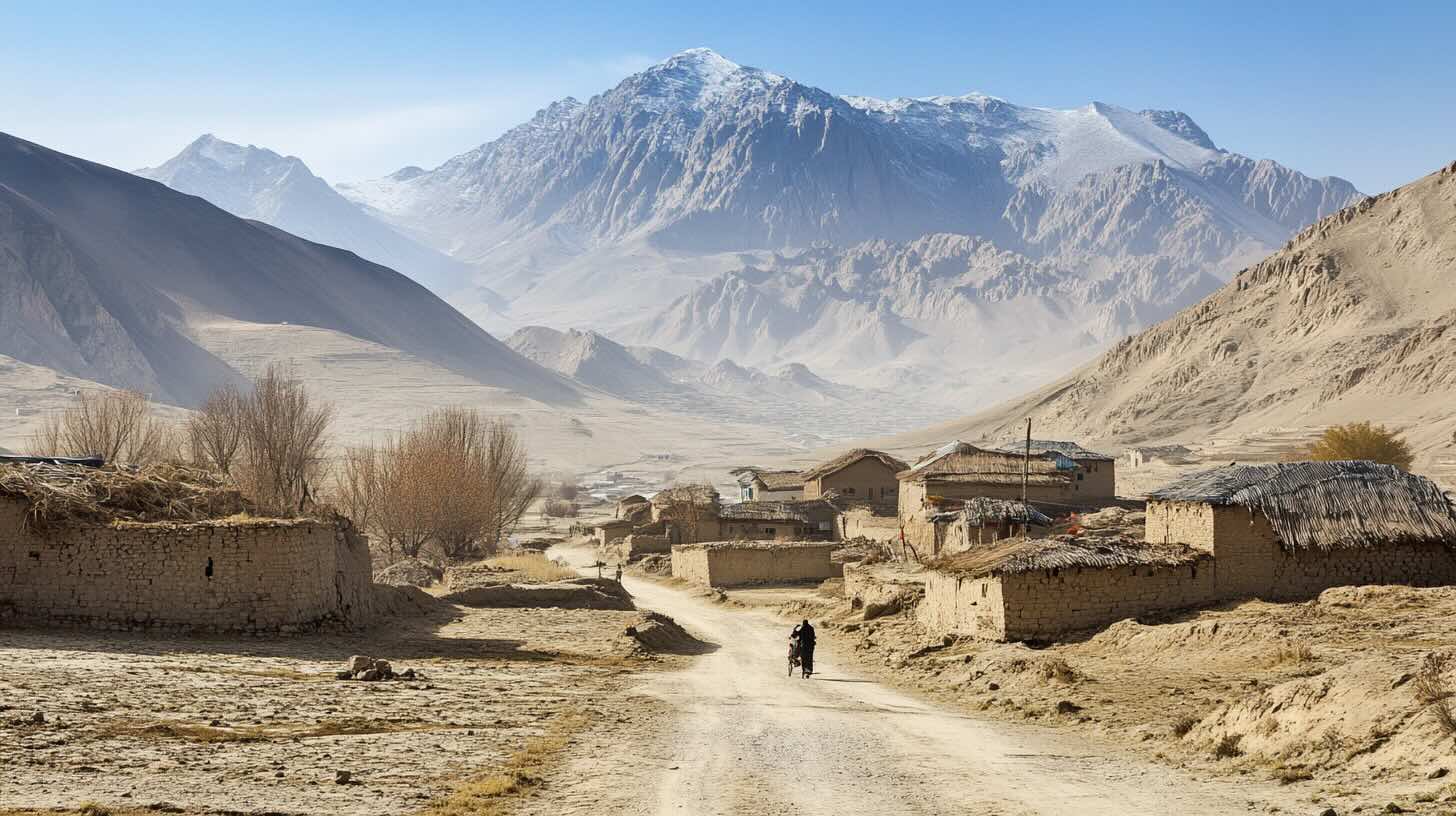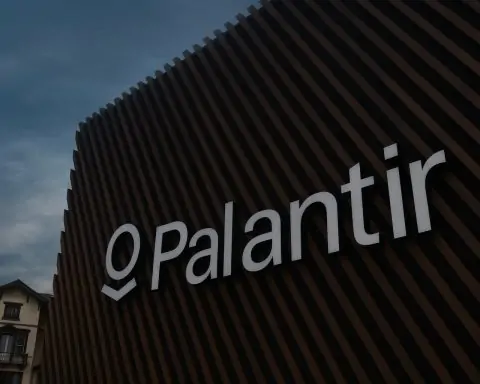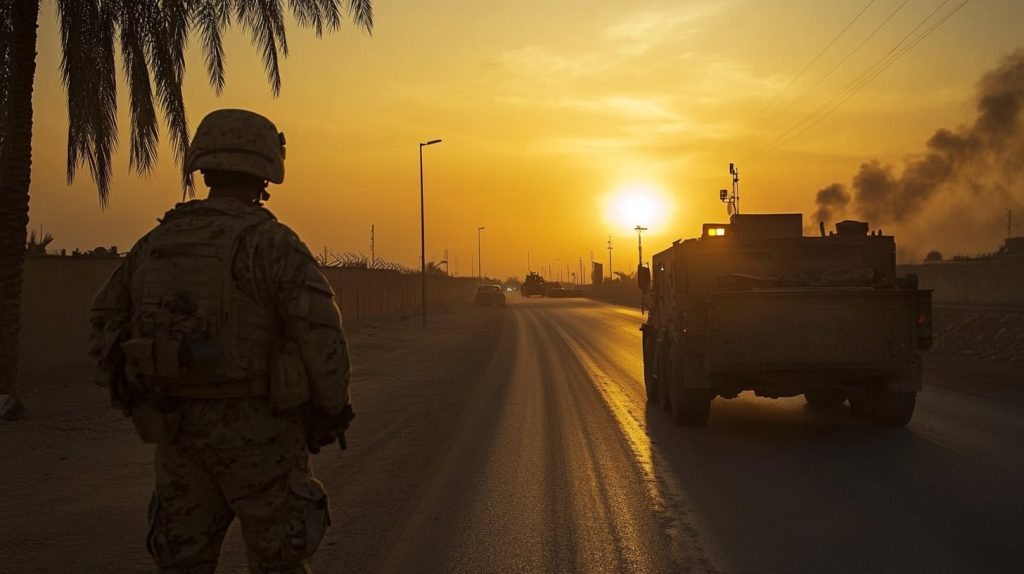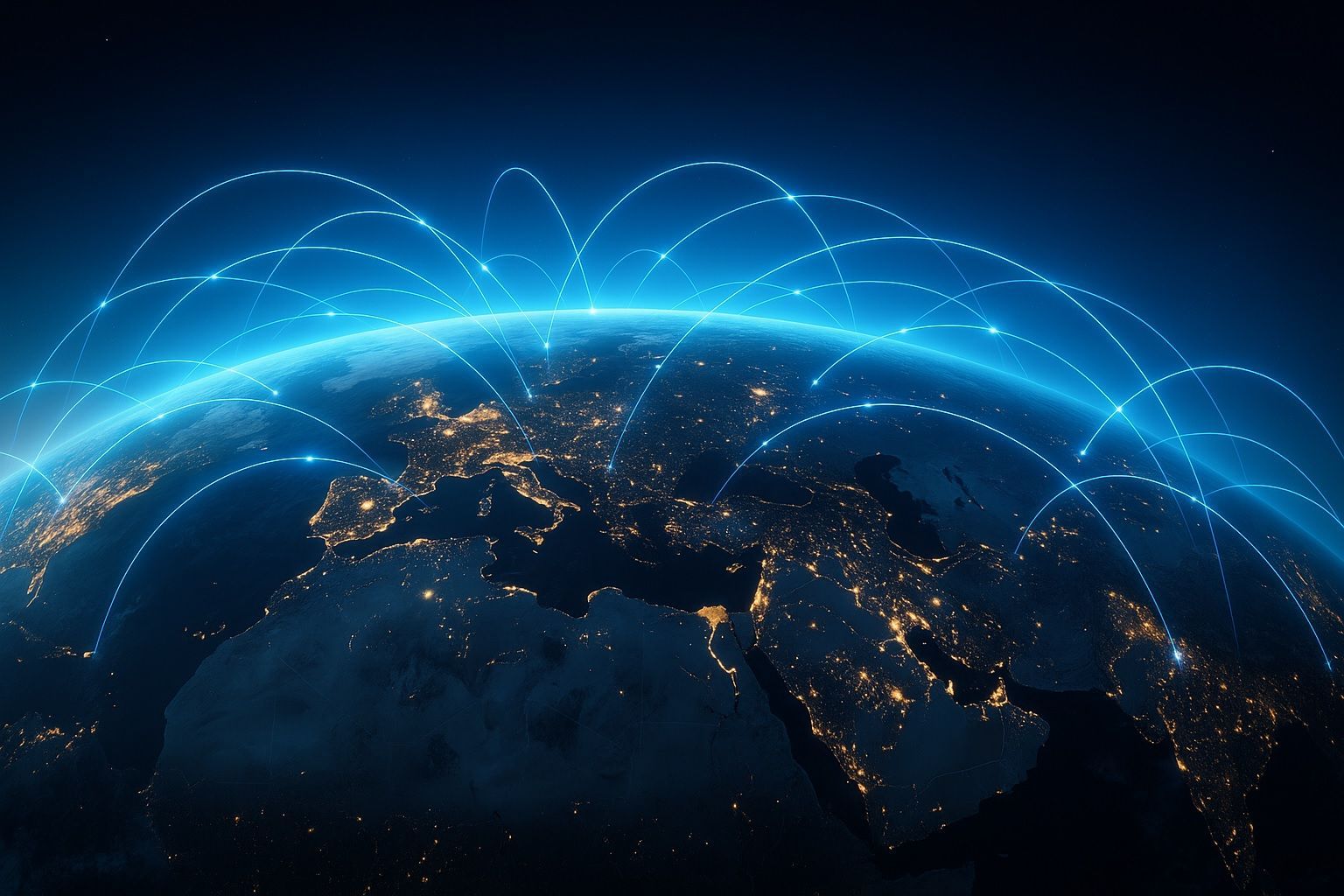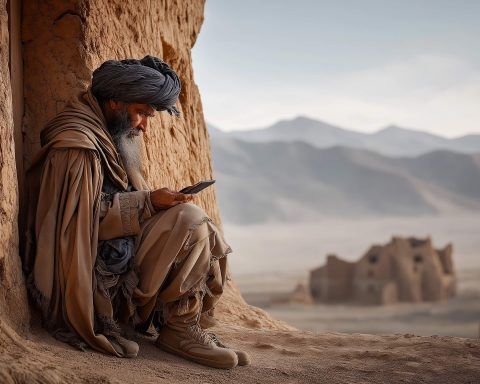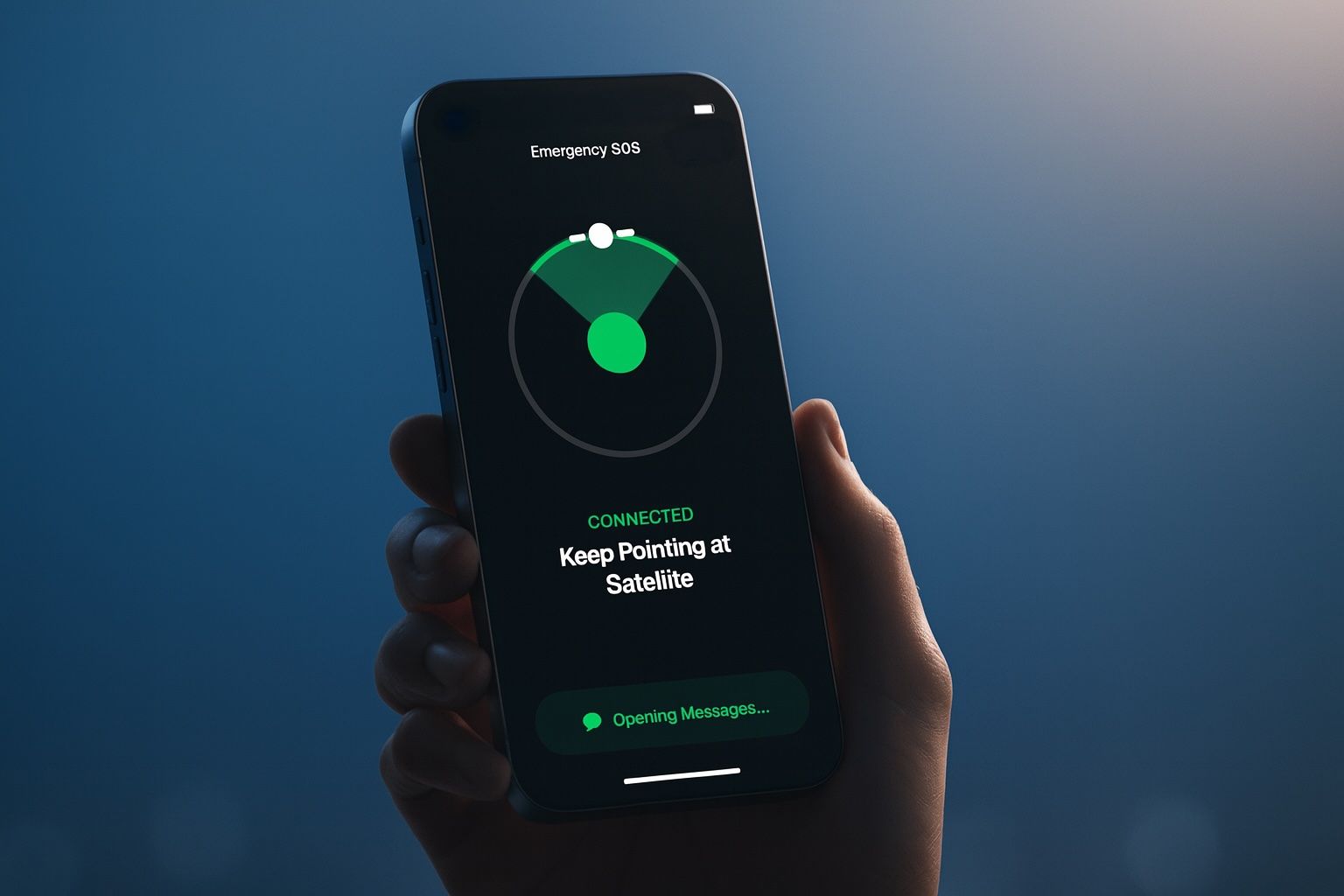- Mobile subscriptions grew from zero in 2001 to nearly 100% penetration by 2021.
- A nationwide fiber-optic backbone was being rolled out, including a 400 km cross-border fiber link to China via the Wakhan Corridor that was near completion in 2021.
- The Taliban’s return to power in August 2021 stalled or halted many fiber and broader connectivity projects.
- The five dominant providers are Afghan Telecom (Aftel/Salam), AWCC, Roshan, Etisalat Afghanistan, and MTN Afghanistan, with MTN planning to exit the Afghan market.
- An Internet Exchange Point (IXP) was established in Kabul to route local traffic domestically.
- Since August 2021, Taliban authorities blocked about 23.4 million websites for ‘immoral content’ and banned TikTok and PUBG in 2022.
- Taliban censorship and surveillance have led to self-censorship and reports of smartphone checks at checkpoints to seize material deemed objectionable.
- Internet penetration was about 22.9% (9.23 million users) in early 2022 and 18.4% (7.88 million) by 2024.
- As of early 2025, Afghanistan ranked around 149th of 158 in global broadband speed rankings, with fixed broadband speeds around 3.8 Mbps down and 3.1 Mbps up.
- There is no official Starlink presence as of 2025; satellite internet remains limited, with Wasel Telecom using satellite backhaul to reach rural villages since 2017.
Internet Infrastructure and Major Service Providers
Afghanistan’s internet infrastructure is relatively underdeveloped, relying heavily on mobile networks and limited fixed broadband. After 2001, the country had to build its telecom network from scratch, as the previous Taliban regime had effectively banned the internet [1]. In the two decades that followed, mobile telecommunications saw rapid growth – rising from zero subscribers in 2001 to nearly a 100% mobile subscription penetration by 2021 [2]. A nationwide fiber-optic backbone was being rolled out and even a 400 km cross-border fiber link to China (via the Wakhan Corridor) was near completion in 2021 [3]. However, the Taliban’s return to power in August 2021 stalled or halted many of these projects [4] [5], casting uncertainty on the finalization of the fiber network.
Major service providers in Afghanistan include a mix of state-run and private mobile operators that also serve as the primary ISPs. The key players are:
- Afghan Telecom (Aftel/Salam) – the state-owned telecom provider (offers fixed-line, mobile, and internet services) [6].
- Afghan Wireless Communication Company (AWCC) – a privately owned Afghan company and one of the first mobile operators [7].
- Roshan (Telecom Development Company Afghanistan) – a major mobile network operator with foreign (Aga Khan Fund) investment [8].
- Etisalat Afghanistan – a subsidiary of the UAE-based Etisalat, providing mobile and internet services [9].
- MTN Afghanistan – part of South Africa’s MTN Group (though MTN announced plans to exit the Afghan market) [10].
These five companies dominate Afghanistan’s telecom sector [11]. There are also dozens of smaller ISPs (e.g. Insta Telecom, Neda Telecom, Wasel Telecom, etc.) offering services in urban centers or via satellite in remote areas [12]. Overall, connectivity for end-users is delivered primarily through wireless mobile networks rather than fixed lines [13]. An Internet Exchange Point (IXP) was established in Kabul in recent years to help route local traffic domestically and improve efficiency [14]. Despite these developments, Afghanistan’s internet infrastructure remains fragile and less advanced than that of most countries, with limited redundancy and capacity [15].
Government Regulations, Policies, and Censorship under Taliban Rule
Government oversight of the internet has hardened under Taliban rule, bringing strict censorship and conservative policies. When the Taliban last governed (1996–2001), they banned internet access for the public, deeming it immoral – effectively cutting off Afghans from the emerging online world [16]. After their ouster in 2001, the new Afghan government adopted more open policies, and internet usage slowly grew under a regulated but generally open regime. There were laws against online obscenity or anti-Islamic content, but outright censorship was limited.
Since the Taliban regained power in August 2021, they have imposed far-reaching censorship and controls. Taliban authorities have blocked access to millions of websites that they consider immoral or anti-Islamic. By one year into their rule, officials claimed to have blocked 23.4 million websites for “immoral content” [17]. “When you block one website, another one becomes active,” explained Najibullah Haqqani, the Taliban’s minister of communications, underscoring the regime’s intent to wage an endless campaign against unwanted online content [18]. Popular platforms have also been targeted – in 2022 the Taliban announced bans on the video-sharing app TikTok and the online game PUBG, accusing them of “misleading youth” and “promoting violence.” These bans were decided by the Ministry of Telecommunications in consultation with the Taliban’s security and vice authorities [19] [20]. Officials have likewise criticized Facebook for failing to cooperate with Taliban censors, suggesting plans to restrict the platform as well [21].
In practice, the Taliban’s internet policy oscillates between embracing the utility of the internet and tightly controlling it. Notably, the Taliban have promised to expand 4G mobile internet coverage across Afghanistan – an embrace of modern technology that contrasts with their past aversion [22]. Taliban officials in 2022 even touted network upgrades to 4G as a sign of progress [23]. This reflects the regime’s own dependence on the internet for governance and propaganda. Indeed, the Taliban use social media and messaging apps (Twitter, WhatsApp, etc.) extensively for communication and propaganda, despite censoring those same platforms for ordinary citizens [24]. As one analysis noted, a group that once banned the internet now “relies on WhatsApp” to run its administration [25].
On the censorship front, however, Taliban authorities have shown little tolerance for online freedom. The new government has tightened content rules for media and individuals: criticism of Taliban officials or policies online can lead to intimidation or arrest [26]. There are reports of Taliban agents conducting physical checks of smartphones at roadblocks – seizing devices and scrolling through apps to find any material deemed objectionable [27]. Afghans have been detained or beaten for social media posts critical of the regime; for example, in one case a local TikTok user was arrested and beaten by morality police over his posts [28]. Fear of surveillance and punishment has led to widespread self-censorship online [29] [30]. Many journalists and activists scrubbed their social media profiles after the takeover [31]. Overall, internet freedom has dramatically deteriorated – one report describes the Taliban’s new restrictions and network shutdowns as the “last nail in the coffin” for free expression online in Afghanistan [32]. While the Taliban claim to support internet expansion, they are simultaneously constructing an intrusive apparatus of censorship and surveillance that severely limits open access to information.
Accessibility, Penetration Rates, and the Digital Divide
Internet accessibility in Afghanistan remains very low compared to global standards. As of early 2022, there were an estimated 9.23 million internet users in the country – about 22.9% of the population [33]. By 2024, internet penetration appeared to decline to around 18.4% of the population (7.88 million users) [34], possibly reflecting the economic downturn and migration after the Taliban takeover. In other words, over three-quarters of Afghans are offline, and roughly 31 million people lacked internet access at the start of 2022 [35]. This places Afghanistan among the lowest internet penetration rates in the world [36]. (For context, neighboring Pakistan had about 36.5% internet penetration in 2022, and the global average is well over 60% [37] [38].)
The digital divide in Afghanistan is pronounced across multiple dimensions – urban vs rural, male vs female, and rich vs poor. The population is predominantly rural (about 73% rural in 2022) [39], and remote provinces often have little to no internet coverage. Urban residents, especially in Kabul and other cities, are far more likely to be online than those in villages. Even so, connectivity in urban areas is limited by infrastructure and social norms. For example, a survey in 2022 found only 15% of all Afghans reported having internet access at home or via personal devices [40]. Reliable electricity is lacking in many areas, and the high cost of data packages puts the internet out of reach for many impoverished families [41].
There is also a stark gender gap in internet use. Cultural restrictions and the Taliban’s policies have resulted in far fewer women going online than men. In 2022, 25% of men said they had internet access, compared to just 6% of women [42]. This gap has persisted for years – Gallup surveys show female access had fallen as low as 2% in 2021 under Taliban rule, before rebounding slightly to 6% in 2022 [43]. Women face many barriers: the Taliban have barred girls and women from most secondary schools and universities, cutting off avenues that often provide digital access [44] [45]. Social norms also discourage women from using internet cafés or smartphones. In Kabul (the capital with over 4 million people), only 3% of women reported that they personally use the internet [46], illustrating how deep the divide runs even in the most connected city. Rural women are almost entirely offline – in the countryside, virtually 0% of women have internet access (surveys found only ~2% in rural areas) [47]. The gender digital divide, combined with the urban-rural gap, means that Afghanistan’s already limited internet user base is heavily skewed toward urban male youth.
Key factors contributing to low internet penetration include: lack of infrastructure in remote areas, frequent power shortages, low digital literacy (especially in rural communities), and poverty – the cost of devices and data is prohibitive for much of the population [48]. For many Afghans, even owning a smartphone or computer is a luxury. The result is that internet access is largely the domain of a relatively small segment of society (urban, educated, male) while most others remain unconnected. This digital divide has only been exacerbated under Taliban governance, as many initiatives that aimed to expand affordable connectivity or community technology access (such as “internet cafés” for women or rural telecenters) have stalled or shut down.
Impact of Political Instability on Connectivity (Shutdowns and Cyber Threats)
Afghanistan’s turbulent political and security situation has directly affected internet connectivity over the years. During the long insurgency (2002–2021), Taliban militants frequently targeted telecommunication infrastructure as part of their campaign. Mobile phone towers were bombed or burned, and telecom companies were coerced into shutting down services in areas and at times that the Taliban dictated. In 2019 alone – at the height of conflict – the Afghan Telecom Regulatory Authority reported 220 cell towers destroyed or disrupted by the Taliban and other groups [49]. This decades-old Taliban strategy of attacking communication lines aimed to create an “information vacuum” in contested areas [50]. Insurgents infamously ordered carriers to turn off mobile networks at night in certain provinces, under threat of attack, to prevent government forces from tracking Taliban fighters via cell signals [51] [52]. The cumulative effect of such sabotage was significant: it not only caused huge financial losses and service outages, but also slowed the expansion of a robust network infrastructure. Many planned fiber deployments or tower installations in rural areas were delayed due to security risks, leaving gaps in coverage.
Since the Taliban took power in August 2021, outright conflict has reduced but new stability challenges have emerged. The Taliban-led authorities now control the telecom operators and can directly dictate outages or restrictions. Indeed, the Taliban have shown willingness to shut down the internet during times of unrest or resistance. In September 2021, as the last anti-Taliban holdouts fought in Panjshir Valley, the Taliban reportedly blackened out internet and phone services in Panjshir to isolate the resistance forces there [53]. More recently, localized internet shutdowns have been used to quell dissent in cities. For example, during demonstrations and protests in Kabul, authorities have cut off mobile data in certain neighborhoods to prevent organizers from mobilizing or sharing information [54]. In July 2023, during the Shia Ashura religious ceremonies, internet service was suspended in parts of Kabul – ostensibly for security, though it also impeded communications among protestors and minority groups [55]. These targeted shutdowns underscore how political instability translates into abrupt loss of connectivity for civilians. Each shutdown limits people’s ability to access news, communicate, or document events, raising the risk of misinformation and panic [56].
Beyond shutdowns, cyber threats and surveillance have risen in the unstable environment. Ordinary Afghans fear that online communications could be monitored or traced by the regime. Taliban security units have reportedly used advanced surveillance tools (with possible foreign assistance) to monitor social media and even biometric databases left behind by the previous government [57] [58]. Reports indicate Taliban officials have obtained databases (e.g. biometric identity data) and may use them to target former government employees, activists, or minorities – a serious digital security threat to those individuals [59] [60]. At checkpoints, Taliban agents sometimes demand to inspect phones for “un-Islamic” material or evidence of dissent, as noted earlier [61]. This creates a climate of fear where people delete messages and avoid visiting certain websites.
Afghanistan’s political upheaval has also made the government’s own systems a target for hackers. In late 2024, a group of unidentified hackers breached multiple Taliban ministry servers and leaked over 50 GB of secret Taliban records online [62] [63]. The leaked files (dubbed “TalibLeaks”) came from at least 21 government agencies – a sign that the Taliban’s cybersecurity defenses are quite weak [64] [65]. The incident exposed sensitive data (including prison rosters and travel bans) and embarrassed the regime, even as officials downplayed the impact [66]. This episode highlights that cyber threats are a growing concern in Afghanistan: both in terms of the Taliban monitoring citizens, and anti-Taliban hacktivists or foreign actors breaching Taliban networks. With limited expertise and international isolation, Afghan institutions struggle to secure their digital infrastructure, making cyber attacks a persistent risk.
In summary, Afghanistan’s connectivity has been battered by years of war and remains at the mercy of political events. Conflict destroyed critical infrastructure and the current authoritarian rulers readily pull the plug on internet access when it suits them. Combined with poor cybersecurity and pervasive surveillance, this instability has severely undermined the reliability and safety of internet access in the country.
The Role of Mobile Networks and Broadband Expansion Efforts
Mobile networks are the backbone of internet access in Afghanistan. Because fixed-line broadband is scarce outside a few urban centers, most Afghans who do use the internet do so via mobile data on cellular networks [67]. As of January 2022, there were about 27.5 million cellular mobile connections in Afghanistan (equivalent to ~68% of the population) [68]. By early 2024, the number of mobile connections stayed around 27.7 million (about 65% of population), indicating many Afghans maintain SIM cards even if mobile internet usage is intermittent [69]. It’s common for individuals to have multiple SIMs (for different networks or work/personal use), so the number of connections does not equal unique users [70]. Still, these figures reflect the critical importance of mobile operators in providing communication services across Afghanistan’s mountainous terrain.
Over the past decade, telecom operators gradually upgraded their networks from 2G voice services to 3G and 4G data. By 2020, all major operators had launched 3G services nationwide, and select cities had 4G/LTE coverage through Afghan Wireless, Etisalat, Roshan, and Afghan Telecom’s “Salam” network. Wider 4G rollout had been slow due to cost and security issues, but by mid-2022 Afghanistan was finally seeing broader launch of 4G services across the country [71]. The Taliban regime has actually supported this continuation – somewhat surprisingly, they announced plans to expand 4G coverage to more provinces [72]. In public statements, Taliban officials have touted the adoption of “Western” technologies like 4G as a sign of development, even though the group had once railed against the internet as corrupting [73]. However, the expansion of advanced services like 5G is not on the horizon; Afghanistan’s telecom sector is struggling just to maintain basic services under sanctions and reduced funding. Foreign investment that could fund 5G or fiber deployments has largely dried up since 2021 [74]. For instance, MTN (one of the largest investors) has been seeking to leave Afghanistan, and other international partners are wary of the Taliban regime [75]. This limits the capital and expertise available for major upgrades.
Broadband expansion efforts under the previous government made some progress and face an uncertain future under the Taliban. A key initiative was the construction of a nationwide fiber-optic backbone connecting all 34 provinces in a ring and linking to international fiber routes. By late 2021, Afghanistan had laid thousands of kilometers of fiber and was close to finishing a strategic link to China [76], as well as links to Pakistan, Iran, and Central Asia. Yet, these projects were put on hold due to the regime change and ongoing instability [77] [78]. Taliban forces, during their insurgency, had actually damaged many of the fiber lines they now inherit – reflecting earlier disdain for such infrastructure [79]. It remains unclear if the Taliban government will complete and maintain these fiber networks. So far, signs are mixed: while telecom engineers largely remain in country to keep networks running, the brain drain of skilled technicians and lack of new investment means the telecom infrastructure is “held in a holding pattern” – kept online but not significantly improving, and gradually falling behind modern standards [80].
To reach rural and underserved areas, some innovative projects have been tried. Mobile tower sharing and rollout of solar-powered “off-grid” cell sites were initiatives to extend coverage to remote villages. For example, in 2017 a partnership between Wasel Telecom (an Afghan operator) and an international satellite company trialed small cell base stations powered by solar panels with satellite backhaul to connect isolated villages [81] [82]. This kind of solution can provide a local 2G/3G signal in villages far from fiber lines, using VSAT (satellite) links to the core network. Such efforts, supported by international donors, aimed to bring at least basic connectivity (phone calls, SMS, and limited data) to over 200 rural communities [83]. The Taliban takeover jeopardized some of these expansion projects, but reports indicate that in certain areas, local telecom technicians have kept cellular sites active and continue modest expansion where possible.
In summary, mobile networks remain the lifeline of Afghanistan’s internet access. The focus is on preserving existing 3G/4G coverage and gradually filling coverage gaps, rather than leapfrogging to new technologies. The Taliban administration, out of necessity, has so far allowed the technical teams to continue operations and even expresses support for expanding coverage. But without significant investment and a stable environment, Afghanistan’s mobile broadband will likely stagnate or progress very slowly. The country’s connectivity gains of the 2010s have largely stalled, and the goal now is to prevent backsliding (such as network collapse or regression to 2G-only services in some areas).
Satellite Internet Availability, Providers, and Future Potential
Given Afghanistan’s challenging geography and decades of conflict, satellite internet has played a niche but important role in connectivity. Traditional wired infrastructure is difficult to deploy in the many remote, mountainous regions. Thus, since the 2000s, VSAT (Very Small Aperture Terminal) satellite links have been used by businesses, NGOs, and government offices to connect to the internet where terrestrial networks were unavailable. Several Afghan ISPs (such as Afghan Satellite Communications, Neda Telecom and others) historically provided broadband via satellite for clients outside major cities. However, satellite bandwidth is expensive and was not widely used by the general public. It mainly served military bases, embassies, provincial government HQs, and some remote community centers in the past.
Currently, satellite internet for consumers is very limited in Afghanistan. There is no official presence of newer low-earth-orbit satellite services like SpaceX’s Starlink as of 2025. Operating such services requires ground gateway stations in neighboring countries or regulatory approval, which are serious hurdles in Afghanistan’s case [84] [85]. The Taliban government would need to permit and coordinate with any satellite internet provider – something that has not occurred yet. In theory, Starlink or similar constellations could beam internet directly to user terminals in Afghanistan, potentially bypassing Taliban-controlled gateways. But experts note significant technical and legal challenges to doing this without the host government’s consent [86]. For one, Starlink satellites (until recently) needed nearby ground stations connected to the global internet, and it is unlikely SpaceX can place such stations in Afghanistan or neighboring sanctioned countries like Iran [87]. Moreover, the Taliban could simply confiscate unauthorized satellite dishes if discovered. As of now, there are anecdotal reports of Afghans attempting to use satellite phones or satellite terminals clandestinely, but no widespread adoption.
That said, some satellite-based initiatives continue in a controlled manner. Afghan telecom operators have used satellite backhaul to extend mobile service in rural areas. As mentioned, Wasel Telecom partnered to deploy small cellular towers with satellite links for villages [88] [89]. This effectively brings internet (and basic cellular service) to locals without each user needing a satellite dish – the satellite link is at the tower. Such setups are likely subject to Taliban approval now, but if framed as expanding communication for local development, they may persist. Another area is satellite broadband for emergency and media use. International media outlets and humanitarian agencies in Afghanistan often rely on satellite internet (like Inmarsat, Thuraya, or VSAT terminals) to send reports when other networks are down or monitored. Recently, the Taliban have shown hostility to unsanctioned satellite communication – for example, there were reports of Taliban attempting to jam satellite television signals of exiled Afghan news broadcasters [90]. This suggests the regime is wary of satellite channels that bypass its censorship.
In terms of regulation, under the previous government the use of satellite equipment required a license from the telecom regulator (ATRA). Under the Taliban, the regulatory framework is unclear, but they have folded ATRA into the Ministry of Communications. It’s likely that private ownership of satellite transmitters (VSATs, satellite phones, etc.) is heavily restricted now for security reasons. Only government or approved organizations might legally operate them.
Looking to the future, satellite internet could be a double-edged sword in Afghanistan. On one hand, modern low-orbit satellite constellations have the potential to connect remote Afghan communities quickly without waiting for fiber or mobile towers. They could also provide a way for citizens to access an uncensored internet if the Taliban cannot control the signal. On the other hand, the Taliban regime may view open satellite internet as a threat to their information control. Unless there is a change in governance or an agreement, it’s unlikely we’ll see a nationwide rollout of services like Starlink in Afghanistan in the immediate future. Technologically, the new generation of satellites with laser interlinks (which don’t rely on local ground stations) might make it possible to beam internet from space into Afghanistan without Taliban permission [91] [92]. But the Taliban could still punish those found using it on the ground. Thus, the uptake of satellite internet will depend on political will. If stability improves and the government (Taliban or otherwise) decides to invest in connectivity for all regions, they might partner with satellite firms to reach the hardest terrains. International donors could also sponsor satellite connectivity for education or health projects in isolated Afghan villages.
In summary, satellite internet in Afghanistan today remains on a small scale – mostly behind the scenes powering cell towers or used by specialized users. Its future potential is significant for bridging the digital divide in a mountainous country, but realization of that potential will require a conducive political climate and regulatory support that currently do not exist.
Comparison with Regional and Global Standards (Speed, Freedom, and Accessibility)
When comparing Afghanistan’s internet access to regional and global standards, the country unfortunately ranks at or near the bottom on most metrics of speed, quality, and openness of internet.
Internet speed and quality: Afghanistan has some of the slowest internet speeds in the world. As of early 2025, the country ranked around 149th out of 158 in global broadband speed rankings [93] [94]. Average fixed broadband download speeds hover in the single-digit megabits per second. One analysis measured Afghanistan’s average fixed-line download speed at just 3.8 Mbps (and ~3.1 Mbps upload) – a tiny fraction of the global average, which is on the order of 60–100 Mbps [95]. Even within its region, Afghan internet is extremely slow: neighboring Pakistan, for instance, ranks ~138th globally in broadband speed, with downloads around 10–12 Mbps, notably faster than Afghanistan’s ~4 Mbps [96] [97]. On mobile networks, Afghanistan often doesn’t even register a rank due to insufficient data, but historically median mobile data speeds have been only a few Mbps as well. By comparison, the global median mobile internet speed is above 30 Mbps, and even in South Asia countries like India have ~25 Mbps mobile speeds. The poor speeds in Afghanistan are attributable to limited bandwidth capacity, older technology in use, and network congestion. The backbone connections to the global internet are few and run through neighboring countries, resulting in high latency and bottlenecks. Additionally, decades of under-investment and war damage means the broadband infrastructure (DSL, fiber to home, etc.) is minimal; most users rely on crowded mobile networks, which yields lower speeds. Thus, in terms of speed, Afghanistan is well below regional averages and in the bottom tier globally [98].
Internet freedom and censorship: Afghanistan’s internet is also among the least free in the world under Taliban rule. While precise rankings (e.g. Freedom House’s Freedom on the Net index) are not available for the current period, the environment shares characteristics with the most repressive regimes. There is heavy government censorship of content, lack of independent media online, and users have been arrested or attacked for online speech [99] [100]. This places Afghanistan on par with countries like China, Iran, and Myanmar in terms of online repression. For example, the Taliban’s blanket blocking of ~23 million websites for “immoral” content [101]and banning of popular platforms is reminiscent of China’s Great Firewall (though implemented less technologically sophisticated). Internet freedom in Afghanistan was already limited by security threats and conservative norms, but the Taliban’s actions have “further restricted access” and created a pervasive climate of fear online [102]. By contrast, many other countries in the region have at least partially free internets or fewer restrictions – for instance, Pakistan and Iran do censor content, but users still find some space to criticize authorities (albeit at personal risk). Under the Taliban, even private WhatsApp or Facebook communications risk punishment, leading to widespread self-censorship [103] [104]. In global indices, this would undoubtedly rank Afghanistan as “Not Free” with a very low score on internet freedom. Thus, compared to global standards of internet freedom, Afghanistan is an outlier where basic digital rights (free expression, privacy, access to information) are severely curtailed.
Accessibility and penetration: As noted, Afghanistan’s internet penetration (~18–23%) is far below the global average. Worldwide, roughly 66% of people were online by 2023 according to UN estimates – Afghanistan’s rate is barely a third of that. Even within South Asia (which as a region has lower-than-global internet use), Afghanistan is lagging. India has about 50% internet usage, Pakistan ~36%, Bangladesh around 30% – all substantially higher than Afghanistan’s ~20% [105] [106]. Afghanistan’s figure is comparable to a few of the world’s least connected countries (such as Yemen or some sub-Saharan African nations). The digital divide internally is also worse than in many countries. For example, the gender gap in Afghanistan (men 25% vs women 6% access in 2022) is one of the largest in the world [107]. By comparison, in Pakistan about 21% of men and 11% of women used the internet in 2022 (still a gap, but not as extreme) and in Iran roughly equal proportions of men and women go online. The urban-rural disparity is similarly stark: Afghanistan’s rural majority is mostly offline, whereas in many countries rural populations at least have some mobile internet access now. Essentially, Afghanistan is an outlier in how many of its people remain unconnected. This lack of access is due to the country’s poverty and instability – factors more acute than in neighboring states.
In terms of regional initiatives and integration, Afghanistan also trails. Many countries are adopting 5G, expanding fiber networks, and improving digital literacy; Afghanistan is struggling to keep 3G/4G running and has halted its fiber expansion in many areas [108] [109]. The contrast is stark when looking at positive indicators: for instance, broadband affordability (cost as a percent of income) is very poor in Afghanistan, meaning internet is a luxury, whereas some neighbors have driven costs down. And while other countries have thriving local online services and e-commerce, Afghanistan’s online ecosystem is underdeveloped, partly due to low access and political isolation.
In conclusion, Afghanistan’s internet access falls significantly short of both regional and global benchmarks on most counts. Connection speeds are slow, coverage is limited, and usage is low. Perhaps most worryingly, the freedom to use the internet without fear is practically nonexistent under the current regime, in contrast to the more open digital environments that many people worldwide take for granted. Afghanistan’s digital progress, which was already behind, has been further set back by political upheaval – creating a situation where the country is one of the most digitally isolated and constrained in the world [110] [111].
References
1. www.wired.com, 2. www.businesswire.com, 3. www.businesswire.com, 4. www.businesswire.com, 5. www.businesswire.com, 6. www.businesswire.com, 7. www.businesswire.com, 8. www.businesswire.com, 9. www.businesswire.com, 10. www.wired.com, 11. www.wired.com, 12. www.businesswire.com, 13. www.globalpolicyjournal.com, 14. www.kentik.com, 15. www.wired.com, 16. www.wired.com, 17. m.rediff.com, 18. m.rediff.com, 19. www.armytimes.com, 20. www.armytimes.com, 21. m.rediff.com, 22. virtuallyislamic.com, 23. virtuallyislamic.com, 24. www.kentik.com, 25. www.kentik.com, 26. www.kentik.com, 27. www.kentik.com, 28. www.kentik.com, 29. www.globalpolicyjournal.com, 30. www.globalpolicyjournal.com, 31. www.globalpolicyjournal.com, 32. news.gallup.com, 33. datareportal.com, 34. datareportal.com, 35. datareportal.com, 36. www.globalpolicyjournal.com, 37. datareportal.com, 38. www.chathamhouse.org, 39. datareportal.com, 40. news.gallup.com, 41. news.gallup.com, 42. news.gallup.com, 43. news.gallup.com, 44. news.gallup.com, 45. news.gallup.com, 46. news.gallup.com, 47. news.gallup.com, 48. news.gallup.com, 49. www.chathamhouse.org, 50. www.globalpolicyjournal.com, 51. sg.news.yahoo.com, 52. www.cbsnews.com, 53. www.wired.com, 54. news.gallup.com, 55. www.kentik.com, 56. www.wired.com, 57. www.globalpolicyjournal.com, 58. www.globalpolicyjournal.com, 59. www.globalpolicyjournal.com, 60. www.globalpolicyjournal.com, 61. www.kentik.com, 62. www.bitdefender.com, 63. www.bitdefender.com, 64. www.bitdefender.com, 65. www.bitdefender.com, 66. www.bitdefender.com, 67. www.globalpolicyjournal.com, 68. datareportal.com, 69. datareportal.com, 70. datareportal.com, 71. www.businesswire.com, 72. virtuallyislamic.com, 73. virtuallyislamic.com, 74. www.wired.com, 75. www.wired.com, 76. www.businesswire.com, 77. www.businesswire.com, 78. www.businesswire.com, 79. www.businesswire.com, 80. www.wired.com, 81. www.speedcast.com, 82. www.speedcast.com, 83. www.speedcast.com, 84. qz.com, 85. qz.com, 86. qz.com, 87. qz.com, 88. www.speedcast.com, 89. www.speedcast.com, 90. www.iranintl.com, 91. qz.com, 92. qz.com, 93. www.speedtest.net, 94. tribune.com.pk, 95. www.speedtest.net, 96. www.speedtest.net, 97. www.speedtest.net, 98. www.speedtest.net, 99. news.gallup.com, 100. www.kentik.com, 101. m.rediff.com, 102. news.gallup.com, 103. www.globalpolicyjournal.com, 104. www.kentik.com, 105. datareportal.com, 106. www.chathamhouse.org, 107. news.gallup.com, 108. www.businesswire.com, 109. www.businesswire.com, 110. www.globalpolicyjournal.com, 111. news.gallup.com
